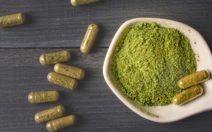
ABC Issues Adulterant Bulletin; Announces Raw Materials Program

Ezra Bejar, PhD, John Carolina II, PhD, and Roy Upton co-authored the bulletin. The document was reviewed by 19 experts with knowledge of the rhodiola supply chain or of medicinal plants and analytical chemistry. The bulletin contains information on the main medicinal uses of rhodiola, the production and market importance, a list of the known adulterants and substituted species, substitution frequency, and analytical methods to distinguish Rhodiola rosea from closely related species.
There is a difference in understanding of what rhodiola means between Western manufacturers of herbal dietary supplements and Chinese supplies, according to the technical director of the Botanical Adulterants Program Stefan Gafner, PhD. Because of this, a number of Rhodiola species have been found in the supply chain.
The bulletin summarizes topics regarding botanical identity and adulteration so that control personnel and lab technicians in industries where botanical ingredients are used will be aware of widespread adulteration issues that may be a health/safety concern.
Raw Material Circulation Plan
Meanwhile, Nutra Ingredients USA reports the ABC is working to create a new industry-standard plan to ensure rejected raw materials are removed from circulation. ABC founder and executive director Mark Blumenthal made the announcement at the Rocky Mountain Dietary Supplement Forum in Boulder, CO, on Oct. 11.
Raw materials may be rejected for a variety of reasons. Containing high heavy metal content, having pesticide residues, or failing microbial contamination tests are some examples. Additionally, raw materials may be rejected for being adulterated, which may include containing plant parts from the same species without specifying so or the inclusion of chemicals which make ingredients appear more potent.
In his announcement, Blumenthal stated that the industry practice is for receivers of raw materials to send rejected materials back to suppliers and receive refunds. The rejected materials, however, are not removed from circulation. If another manufacturer chooses to accept these materials, suppliers will turn a blind eye. “That’s what’s happening. We all know it. Rejected material stays in the supply chain,” stated Blumenthal, reported Nutra Ingredients.
The ABC is working to create a Standard Operating Procedure (SOP) which will require these materials to be destroyed.
“We want to have a way for companies to say to their suppliers, if we find adulterated, illegal ingredients, we are going to destroy the lot and you are going to pay for it,” Nutra Ingredients quoted Blumenthal saying. “This material should never have been shipped the first time; we want to make sure it doesn’t get shipped a second time.”
A key part of the program would include third-party verification of the tests and the destruction of goods to prevent fraud. Blumenthal and the ABC are working to develop this aspect of the procedure to protect both the buyers and the sellers.
Published on WholeFoods Magazine Online, 10/16/17

The editorial team at WholeFoods Magazine has decades of experiences reporting on natural products industry news, trends, and more. This national, monthly business-to-business magazine has been published continuously for nearly 40 years (the magazine was founded in 1977, and has been owned by Wainer Finest Communications since 1984). It is the longest-tenured media outlet of its kind in the natural products industry. The editorial focus at WholeFoods Magazine is, and always has been, on informing and educating members of the natural products industry.
The Magazine
Information
About Us
NOTE: WholeFoods Magazine is a business-to-business publication. Information on this site should not be considered medical advice or a way to diagnose or treat any disease or illness. Always seek the advice of a medical professional before making lifestyle changes, including taking a dietary supplement. The opinions expressed by contributors and experts quoted in articles are not necessarily those of the publisher or editors of WholeFoods.







